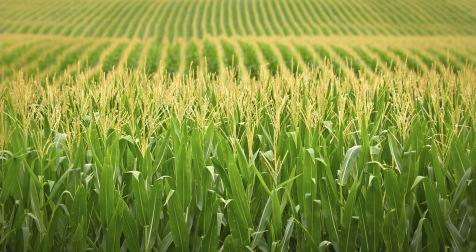
Cornfield with multiple rows of corn. Green and yellow
Bioenergy, sourced from organic materials rather than the prolonged geological processes that produce fossil fuels, emerges as a cleaner, more sustainable energy option. Anticipated to witness a notable rise in demand soon, bioenergy is set to significantly diminish our reliance on traditional fossil fuels.
The primary materials for producing bioenergy include crops such as wheat, corn, soybeans, and sugarcane, along with various waste substances. These sources are known for emitting lower levels of pollutants and greenhouse gases, including carbon dioxide, making them a greener choice compared to conventional fossil fuels.
This form of energy is expected to experience a substantial boost in demand shortly, marking a critical shift in our energy consumption habits. By adopting bioenergy, we can greatly lessen our dependence on standard fossil fuels, which are key culprits in environmental harm and climate change.
Bioenergy utilizes a range of crops and waste materials, making it a sustainable energy source. These include agricultural residues, forestry by-products, and municipal waste, offering a new purpose for these materials while reducing the overall environmental waste burden.
A major benefit of bioenergy is its reduced emission footprint. Bioenergy resources burn cleaner than fossil fuels, releasing fewer pollutants and greenhouse gases like carbon dioxide. The reason bioenergy is considered an eco-friendlier option lies in its carbon cycle balance. When bioenergy is produced through combustion, the amount of CO2 released is roughly equivalent to what the plants had absorbed during their growth phase. This equilibrium in CO2 levels contrasts sharply with the impact of traditional fossil fuels, which emit carbon dioxide that has been trapped underground for millennia, thereby exacerbating global warming. These characteristic positions bioenergy as a more sustainable and environmentally conscious choice compared to conventional fossil fuels.
Moreover, bioenergy can boost rural economies by providing new markets for crops and by-products and generating jobs in bioenergy processing and distribution. This economic boost is especially beneficial in rural areas, where economic opportunities are often scarcer. Let’s have a look at the most suitable crops for bioethanol production.
Corn
Corn is a leading bioenergy source, particularly for ethanol production. The process, akin to brewing beer, involves converting the sugar in corn into ethanol. Corn kernels are ground, mixed with yeast and warm water, and then fermented to produce ethanol. This ethanol is then blended with gasoline for use in modern car engines, emitting lower levels of carbon monoxide, nitrogen oxide, and sulfur than standard gasoline. Only the kernels are used because the plant’s cellulose is harder and costlier to process.
Rapeseed/Canola
Historically used for cooking and lighting, rapeseed oil is now a significant biodiesel source. Canola, a type of rapeseed with lower erucic acid, is more suitable for human and animal consumption. Canola’s low saturated fat content gives it an advantage in colder climates, and its high oil yield makes it an efficient fuel crop.
Soybean
Soybeans, versatile for both food and industrial products, are a major biodiesel source in the United States. Vehicles and machinery can run on pure soybean biodiesel or a blend with regular diesel. Soybean diesel is more energy-efficient than corn ethanol. One bushel of soybeans yields about 1.5 gallons of biodiesel. However, other sources like Canola and sunflower seeds have higher oil content, at 40% and 43% respectively.
Sugarcane
Sugarcane is another bioethanol source, with Brazil investing heavily in this sector. In the 1980s, most Brazilian vehicles ran on ethanol, but now they use flexible fuel engines. Sugarcane ethanol is significantly cheaper than corn ethanol. However, the practice of burning fields during sugarcane harvest releases substantial greenhouse gases, diminishing some of the environmental benefits of bioethanol.
Palm Oil
Palm oil, derived from palm tree fruit, is an efficient biodiesel source. It can be used in diesel engines without modifications and is less polluting than gasoline. Palm oil has boosted the economies of Malaysia and Indonesia, but its production has led to extensive rainforest destruction in these countries, threatening biodiversity.
Jatropha
Jatropha, a hardy and drought-resistant plant, is a significant biofuel source. Its seeds, containing about 40% oil, are used for biodiesel production. India, a major Jatropha producer, supports rural farming of this crop on otherwise infertile land. Jatropha plants can live for 50 years and are pest resistant. The seeds are processed for oil, while the remaining biomass can be used for fuel.
Conclusion
Bioenergy is a promising route towards a more sustainable, environmentally friendly energy future. Its reliance on renewable resources, lower emissions, and potential economic advantages positions it as an appealing substitute for fossil fuels. As we move towards sustainable energy solutions, bioenergy is likely to become a key player in the global energy scenario.
